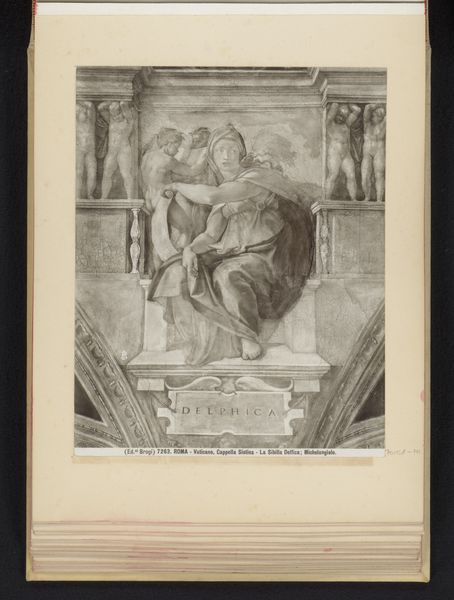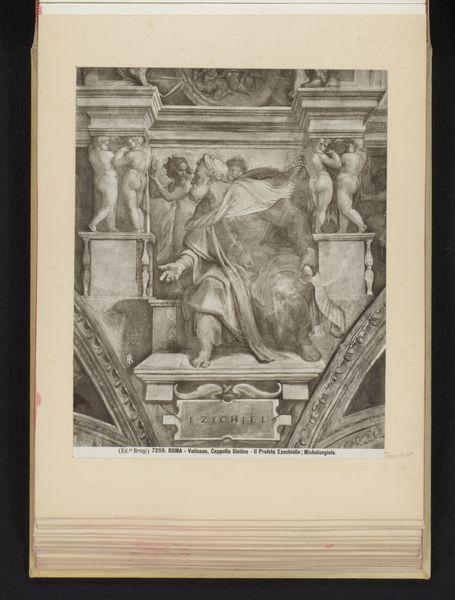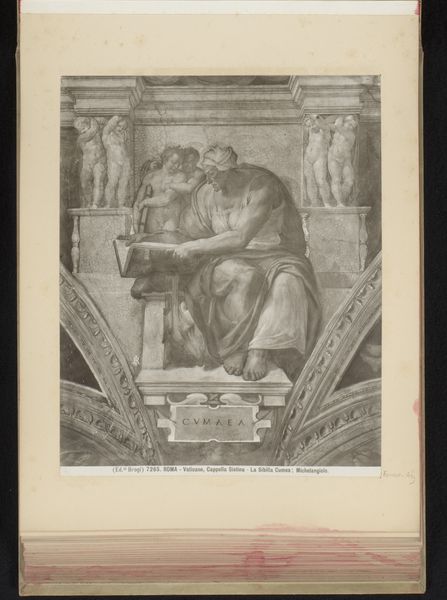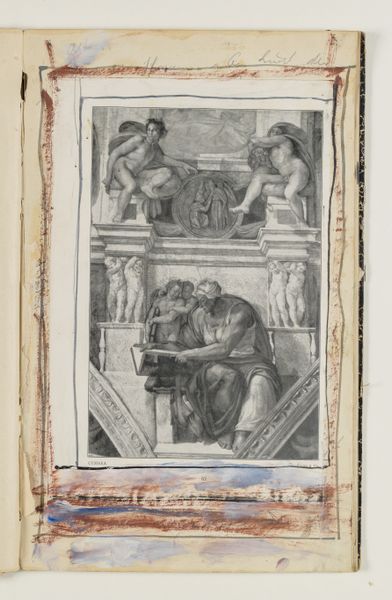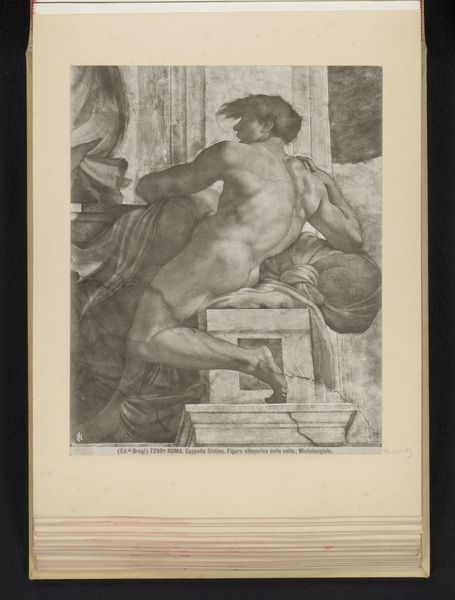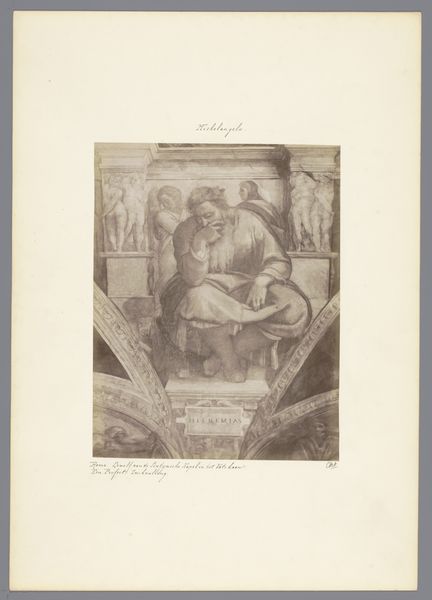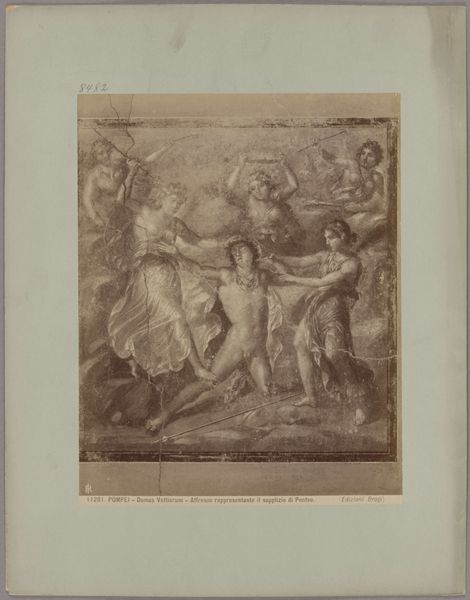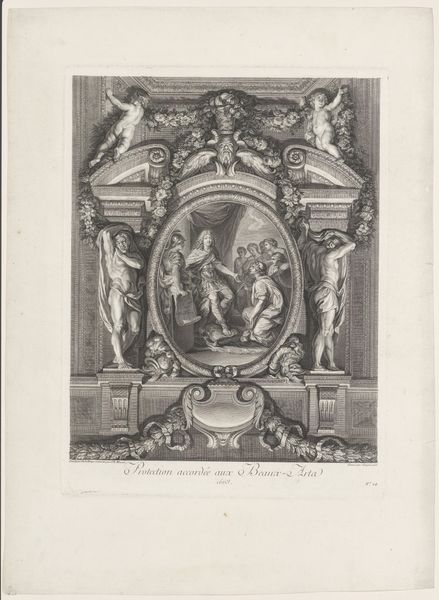
Fresco in de Sixtijnse Kapel te Vaticaanstad, voorstellende de profeet Jona before 1907
0:00
0:00
fresco
#
narrative-art
#
figuration
#
fresco
#
11_renaissance
#
history-painting
#
academic-art
#
italian-renaissance
Dimensions: height 250 mm, width 198 mm
Copyright: Rijks Museum: Open Domain
Curator: Before us, we see an early photograph of Michelangelo’s fresco depicting the prophet Jonah, located in the Sistine Chapel. The photograph comes from Edizione Brogi and predates 1907. Editor: My first impression is one of awe; the sheer scale and dynamism are breathtaking, even in this early photographic reproduction. There's a real sense of emotional turmoil and liberation at play in the image. Curator: It's important to remember where this image sits within the larger context of the Sistine Chapel. Michelangelo was commissioned by Pope Julius II, a powerful figure who saw art as a way to project the authority and grandeur of the Catholic Church. Editor: Absolutely. Jonah himself is a powerful symbol of rebirth and repentance. Being swallowed by the whale, spending three days in its belly, and then being vomited onto dry land—it’s a potent metaphor for spiritual transformation, mirroring Christ's own death and resurrection. Look at the positioning: he's dramatically reclining, almost bursting out of the architectural frame. The figure almost embodies breaking free of limitations, emerging renewed from darkness. Curator: And you see that played out, not just in the theological sense, but in the artistic bravado of Michelangelo. The musculature, the foreshortening... it was groundbreaking. Consider the conservative artistic environment of the time and the audacious display of human form and emotion that defined Renaissance Humanism and asserted a revised central importance of the human experience as critical to religious belief. Editor: Notice the almost ecstatic expression on Jonah’s face? It isn't suffering; it's awakening. The whale isn't a monster, but a vessel for transformation. The children around him seem both supportive and in awe. Also consider this moment to relate the themes of both imprisonment and liberation as critical factors in much art created and understood as essential from its advent during the Italian Renaissance until this very image. Curator: I agree that Michelangelo clearly understood the importance of the prophet Jonah to Christian theology and broader papal goals. This particular section of the ceiling serves a distinct purpose. It is designed to emphasize the links between the Old and New Testaments, providing a visual justification for papal authority rooted in historical and divine decree. Editor: Seeing this now I recall both individual renewal and hope found when navigating deep, even fearful change and the possibilities awaiting rebirth. Curator: Reflecting on this image, I am reminded of the political weight art carried. Commissions such as these reinforced a dominant power structure while pushing boundaries.
Comments
No comments
Be the first to comment and join the conversation on the ultimate creative platform.
